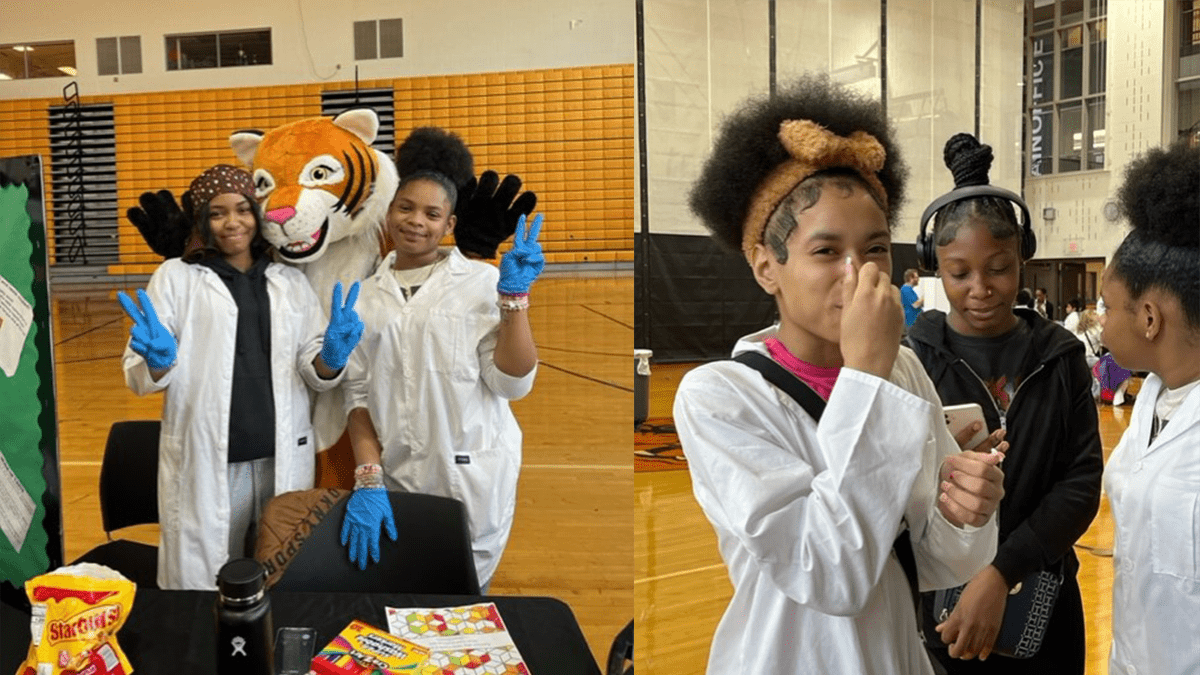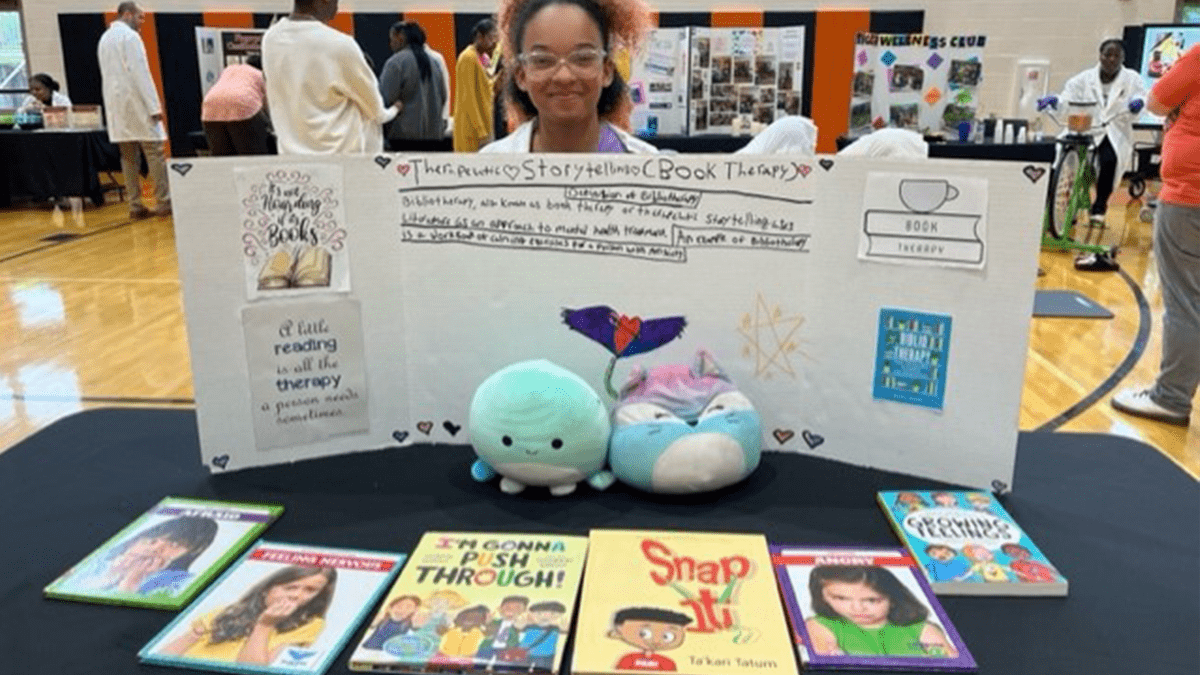Health science academy event brings science to the community
The desire to help family members with chronic health issues led Lanisha to explore education and career options in health sciences. Some of her peers were led by their love of books and science. 
The Ohio State University students came together at the recent Health Science Academy (HAS) event at East High School in Columbus to take health sciences to the community. They did this through collaboration and interactive and hands-on learning in different areas of health and well-being.
The HSA is run in partnership with five health sciences colleges at Ohio State, including The Ohio State University College of Medicine. The HSA teaches learners all aspects of anatomy and physiology, medical terminology and medical assessment techniques, like taking vital signs, as well as more about potential careers in the health sciences.
At the community event, students, teachers, administrators and their families visited different stations offering cross-curricular interactive presentations. One station featured a taste test created by high schoolers L’egna and Lanisha, which was part of their presentation on the gustatory system – the sensory system that’s partially responsible for the perception of taste. They asked participants to close their eyes, eat a piece of candy and identify the flavor.
“Taste and smell information are connected,” Lanisha says. “What we taste in our mouth sends information to our brain.” 
Another station led by instructional coach April had participants view what germs looked like under black or ultraviolet light. They used a lotion called Glo Germs that transforms invisible germs into germs you can see by mimicking everyday germs we all come in contact with.
“Germs are around the building and in high-touch areas like cell phones,” April says. “I’m really happy that I’ve had visitors from students of all ages.”
Salyer shared that during the HSA science and anatomy course, students go on germ scavenger hunts and even have the chance to collaborate with real scientists from Ohio State. April worked with Annika Chura, graduate research associate in Molecular, Cellular and Developmental Biology at the College of Medicine, who brought in a group of 15 graduate students from different research labs to manage dissection activities with elementary students. Chura says many students don’t do dissections until high school and she herself didn’t experience something like a sheep brain or heart dissection until college.
“The elementary schoolers did a great job collaborating with the Graduate Women In Science group on dissections of sheep brains with third graders, sheep hearts with fourth graders and cow eyes with fifth graders,” Chura says. “I think it goes to show that science it something anyone can participate in, at any age.”
Another student named Heaven, based her station on bibliotherapy, or book therapy, to show students and the community the importance of accessing written and visual resources for dealing with emotions like anxiety and sadness.
“Bibliotherapy helps you deal with feelings,” Heaven says. “So, you don’t feel alone.”
Chura thinks events like this encourages children to ask questions and think creatively and helps them see real people doing scientific work.
“Hopefully, this relatability makes the idea of pursuing science more accessible,” Chura says. “And shows them that anyone can explore their interests in STEM.”
